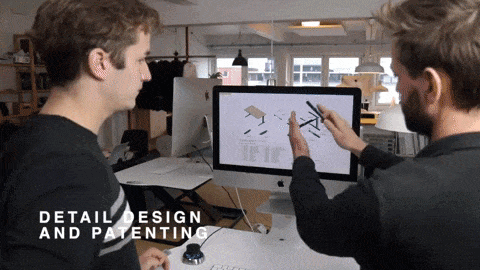It is a real possibility to start as a consultant and end up as an equity shareholder of a new product. We’ve done it multiple times – and believe this hybrid model comes with its own set of advantages.
We were heavily involved in the three first phases of the new project as a consultant.
First, we took care of research and analytics. Then progressed to ideation. And finally, we were responsible for the concept development. And it wasn’t until after the consultancy job was well done, that the client invited us to get equity and even more ownership over the product.
At this point, we already knew the project inside out and felt very confident with the partnership. Which made the decision to get even more involved easy: It was an obvious “yes”.
Building trust before the marriage
Either you’re a consultant or you own the project. This seems to be the conventional wisdom in product development, while the journey from consultant to equity is quite rare. Nevertheless, it’s not the first time we’ve made this journey.
Previously the same thing happened with our engagement with Kooperationen: We were involved in the entire development project, and when they were ready to bring the product to market, they invited us to become equity shareholders and act as the link between them and the manufacturer.
We believe, that the key to journeys like this is building trust. Our partners have to see how we add value to the project – in the end, it can only happen if they both trust us and believe an even deeper involvement from our side will elevate the product further.
We’ve previously written about “Dating new partners”. You can find the post here.
A different kind of risk
The traditional roads are very polarized in their risk profiles. Consultancy is very safe, as we get paid for every hour we put into the project while being the sole owner of our own projects is full of risks.
For this reason, the risk profile of a hybrid model, where we start as consultants before getting fully invested down the road, is interesting to us. However, we do believe the same is true for the initial owner – for a few reasons.
If we start as 50/50 partners on a project before knowing each other in a working relationship, the project can quickly go south if we don’t complement each other as well as expected. By starting as consultants, we get a chance to build trust. If we don’t deliver, the owner has the opportunity to find a different partner. And if we deliver, they can bring us in as a minority partner instead of splitting the project 50/50.
Of course, the right ownership model is different for each project. But it is really satisfying to find these kinds of middle-ground solutions when the traditional black-and-white formats don’t fit.

